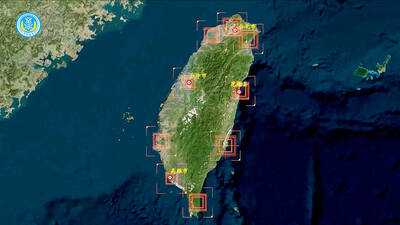Graffiti was once considered a sign of urban decay, the sort of thing that might keep tourists away from a neighborhood. Now, not only is it an accepted art form, but it’s also the subject of a new tour in one of Miami’s trendiest neighborhoods, Wynwood, where legal outdoor murals by graffiti artists cover the walls near art galleries and restaurants.
The two-hour tour — which takes place on Vespas — is offered by a company called Roam Rides. It starts with a 15-minute ride from Miami Beach over the Venetian Causeway to the Wynwood Arts District, considered the mecca of Miami’s emerging arts scene, and includes four or five stops to survey the area’s best graffiti. The tour ends with lunch at a happening Wynwood restaurant.
Once considered a rough neighborhood, Wynwood has become a destination for artists from all over the world. Art galleries abound and events are held here each December as part of the Art Basel Miami Beach art fair. Wynwood is also now home to one of the world’s largest installations of murals by multiple graffiti artists.
“It’s gotten to be so pervasive and it really brightens up the neighborhood,” Kit Sullivan of Roam Rides said.
“It’s so not what you would expect of Miami,” said Jesse Bull, an economics professor who took one of Roam Rides’ recent graffiti tours. “The graffiti has kind of added to that. It livens it up and makes it fresh and artsy and I think that’s a good thing.”
Guides point out work by different local artists — such as Typoe and “Tribe Called Phresh” aka TCP — while explaining the evolution of graffiti from the days when artists plastered their names on vacant buildings and train cars as a way to gain street cred.
These days, building owners give permission to artists to spray paint their designs, and these legal pieces share the walls of dozens of neighborhood art galleries and chic restaurants. They’re easy to distinguish from illegal graffiti, which is often done fast, in secret and at night, with a single or very few colors. The sanctioned murals, in contrast, allow artists to take their time, use multiple colors and work in-depth in large spaces with elaborate details.
“It’s definitely a changing art form,” Sullivan said. “It’s gotten to the point where a lot of these guys don’t even use their names at all. They just have a certain distinctive style. You can recognize it when you see it.” For example, artist Chor Boogie’s signature work includes geometric elements and half-hidden faces, as well as an eye.
Major paint companies are even helping graffiti artists make the transition to a legitimate art form by donating spray paint.
“Graffiti has been a bad word in America for a long time. We are trying to change that,” said Jayson Moreira, co-owner of Montana Colors North America, a spray paint company based in San Francisco, which donated 8,000 cans of spray paint used to create many of the murals in Miami during Art Basel. He even helped paint a mural of Japanese girls on the side of a two-story building that was once an RC Cola plant.
The world of graffiti has its own lingo. Artists “tag” their works with their names. A “throw up” is a quick piece. A “bomb” is usually illegal work that is “thrown up” fast, often at night, in a place that’s difficult to access. “Slashing” is when an artist disrespectfully “throws up” his names over a legal piece. A legally done mural or elaborate work that took days or weeks to complete is considered a “masterpiece.”
Artists looking for a space to paint legally here may seek help from Primary Flight, an organization that has brought hundreds of artists to the streets of Wynwood.
“A lot of people don’t go to museums or aren’t art collectors or art-educated,” Primary Flight founder Books Bischof said. “If you can take the same exact image from a street and put it in the museum, it doesn’t speak as loudly as it would if it were illegally on the street corner or in a gritty part of the neighborhood.”
Oscar Montes, 36, has been painting since he was a young teenager. Better known as Trek6, the artist wanted to pay tribute to his origins and the Puerto Rican community that once made up the Wynwood area, so he painted a legal mural that included a coqui, the island frog named for the ‘ko-kee’ sound it makes at night.
Montes said he spent around US$2,000 of his own money on paint — as well as hours of his time under Miami’s hot sun — creating the mural.
Graffiti is changing, he said. “A purist would tell you it’s gotten really soft,” he said. “When I started, everything was illegal. There was [a] serious graffiti task force. They’re less aggressive now because so much of it is legit.”
But while the artists are invited to do their work on buildings and sometimes get donated materials, for the most part they are not paid. Some predict that may change, and that the Miami graffiti community may eventually find fame and profit in their designs, the way artists like Keith Haring and Jean-Michel Basquiat did in New York several decades ago.
“That generation is going to bring it to another level where one day,” said Erni Vales, who runs a studio in the arts district, “it’s going to be like Pop Art.”

The People’s Republic of China (PRC) last week offered us a glimpse of the violence it plans against Taiwan, with two days of blockade drills conducted around the nation and live-fire exercises not far away in the East China Sea. The PRC said it had practiced hitting “simulated targets of key ports and energy facilities.” Taiwan confirmed on Thursday that PRC Coast Guard ships were directed by the its Eastern Theater Command, meaning that they are assumed to be military assets in a confrontation. Because of this, the number of assets available to the PRC navy is far, far bigger

The 1990s were a turbulent time for the Chinese Nationalist Party’s (KMT) patronage factions. For a look at how they formed, check out the March 2 “Deep Dives.” In the boom years of the 1980s and 1990s the factions amassed fortunes from corruption, access to the levers of local government and prime access to property. They also moved into industries like construction and the gravel business, devastating river ecosystems while the governments they controlled looked the other way. By this period, the factions had largely carved out geographical feifdoms in the local jurisdictions the national KMT restrained them to. For example,

The remains of this Japanese-era trail designed to protect the camphor industry make for a scenic day-hike, a fascinating overnight hike or a challenging multi-day adventure Maolin District (茂林) in Kaohsiung is well known for beautiful roadside scenery, waterfalls, the annual butterfly migration and indigenous culture. A lesser known but worthwhile destination here lies along the very top of the valley: the Liugui Security Path (六龜警備道). This relic of the Japanese era once isolated the Maolin valley from the outside world but now serves to draw tourists in. The path originally ran for about 50km, but not all of this trail is still easily walkable. The nicest section for a simple day hike is the heavily trafficked southern section above Maolin and Wanshan (萬山) villages. Remains of

With over 100 works on display, this is Louise Bourgeois’ first solo show in Taiwan. Visitors are invited to traverse her world of love and hate, vengeance and acceptance, trauma and reconciliation. Dominating the entrance, the nine-foot-tall Crouching Spider (2003) greets visitors. The creature looms behind the glass facade, symbolic protector and gatekeeper to the intimate journey ahead. Bourgeois, best known for her giant spider sculptures, is one of the most influential artist of the twentieth century. Blending vulnerability and defiance through themes of sexuality, trauma and identity, her work reshaped the landscape of contemporary art with fearless honesty. “People are influenced by